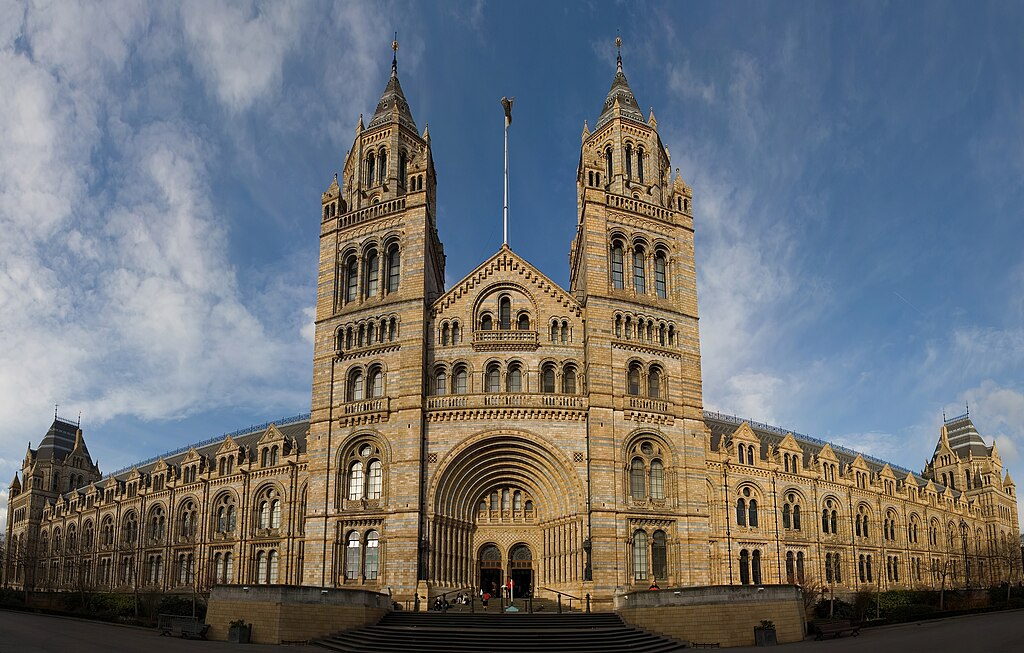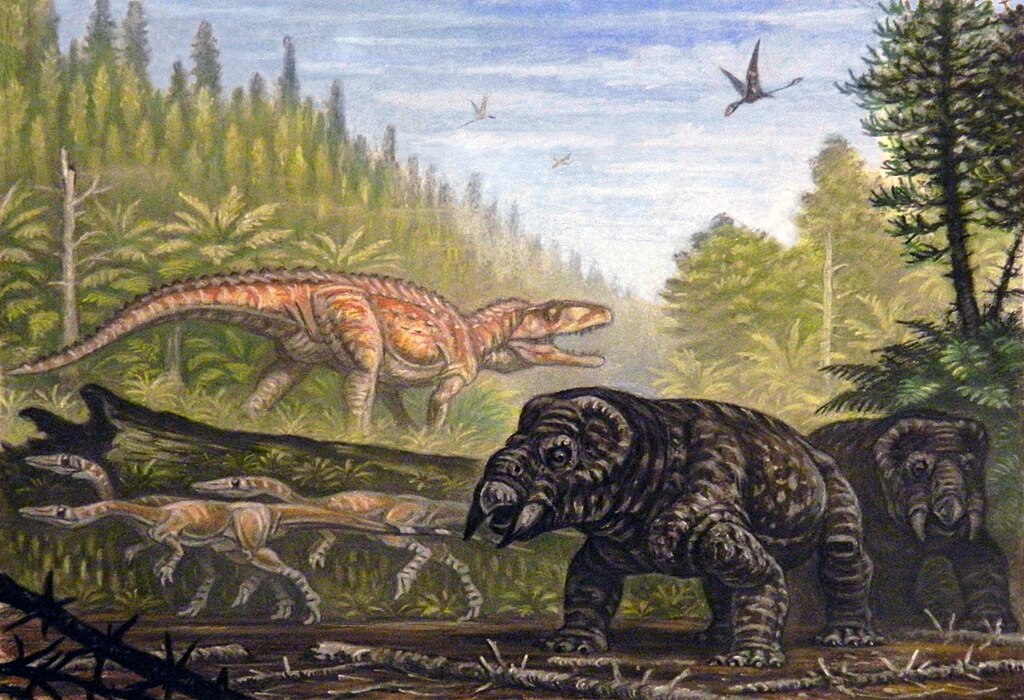The Natural History Museum in London stands as one of the world’s premier institutions for dinosaur enthusiasts, paleontology scholars, and curious visitors alike. Nestled in South Kensington’s museum district, this Victorian architectural masterpiece houses one of the most comprehensive and scientifically significant dinosaur collections on the planet. From spectacular mounted skeletons to groundbreaking research facilities, the NHM has earned its reputation as a global dinosaur destination through a combination of historical significance, scientific excellence, and immersive visitor experiences. This article explores the many facets that make the Natural History Museum in London an unparalleled destination for those fascinated by Earth’s prehistoric giants.
A Historical Legacy of Dinosaur Discovery

The NHM’s relationship with dinosaurs dates back to the very dawn of dinosaur science itself. Founded in 1881, the museum was established during the Victorian era when dinosaur paleontology was rapidly developing as a scientific discipline. The institution became home to many specimens collected during the first great age of dinosaur discovery, including fossils studied by pioneering paleontologists like Richard Owen, who actually coined the term “Dinosauria” in 1842. Many of the type specimens—the original fossils used to define and name new species—reside in the museum’s collections, giving it unparalleled historical importance. These early discoveries form the backbone of the museum’s heritage, creating a direct link between today’s visitors and the scientists who first revealed dinosaurs to an astonished world nearly two centuries ago.
The Magnificent Hintze Hall and Dippy’s Legacy

For decades, the museum’s central Hintze Hall was dominated by “Dippy,” a cast of the Diplodocus carnegii skeleton that became an iconic symbol of the institution. This 26-meter-long sauropod cast, displayed from 1979 to 2017, welcomed generations of visitors and became so beloved that its temporary removal for a touring exhibition caused public outcry. The display demonstrated the sheer scale of dinosaurs in a way that captivated millions of visitors over the years. Dippy’s presence in the hall created a powerful first impression that set the tone for the entire museum experience, cementing dinosaurs as central to the NHM’s identity. Though now replaced by a blue whale skeleton, Dippy’s legacy lives on in the museum’s continued dinosaur focus and in the memories of countless visitors who stood beneath those towering fossil bones.
The Spectacular Dinosaur Gallery
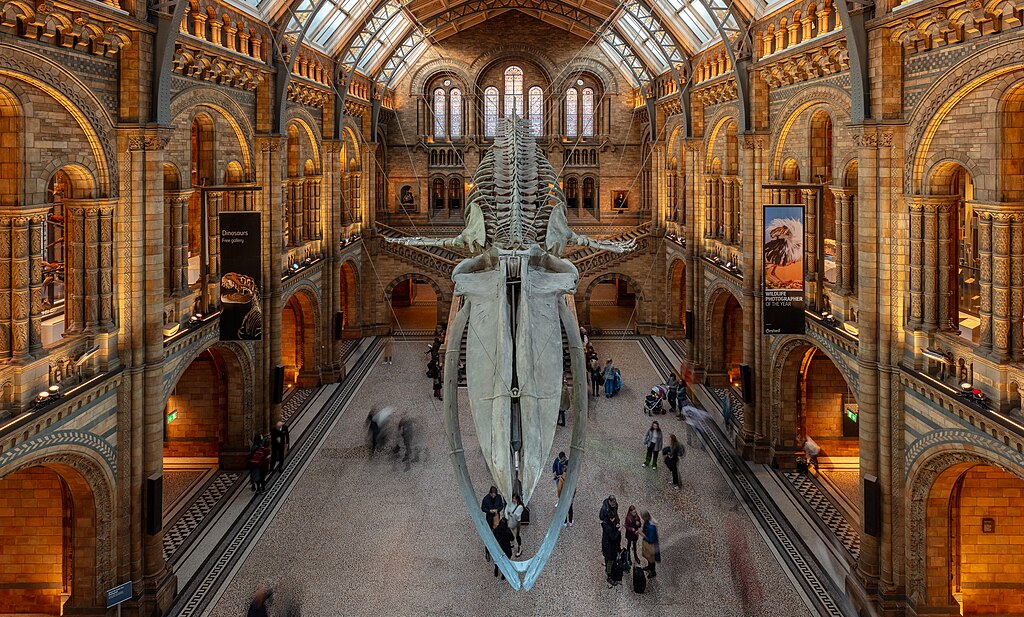
The dedicated dinosaur gallery remains the museum’s most popular attraction, drawing visitors into an immersive journey through the Mesozoic Era. Unlike many museums that simply display fossil specimens, the NHM’s dinosaur gallery combines authentic fossils with cutting-edge technology to create a truly engaging experience. The gallery’s centerpiece is the remarkably complete Tyrannosaurus rex animatronic model that roars and moves, providing visitors with a glimpse of how these creatures might have behaved when alive. Atmospheric lighting, sound effects, and thoughtfully designed display cases enhance the visitor experience by contextualizing specimens within their prehistoric environments. The gallery strikes an effective balance between scientific accuracy and public engagement, making complex paleontological concepts accessible to visitors of all ages and backgrounds.
Scientific Significance of the Collection

Behind the public displays lies a collection of dinosaur fossils that ranks among the most scientifically valuable in the world. The museum houses approximately 80 million specimens, with its dinosaur collection including numerous holotypes—the original specimens upon which new species are defined. This includes the first Iguanodon specimens studied by Gideon Mantell, one of the earliest recognized dinosaur experts. The collection’s breadth spans nearly every major dinosaur group and includes specimens from every continent where dinosaurs have been found. Researchers from around the globe regularly visit the museum to study these specimens, making it a crucial hub for international paleontological research. The scientific importance of these collections extends beyond their historical value, as new technologies allow researchers to extract previously unavailable data from specimens collected centuries ago.
World-Class Research Facilities

The NHM isn’t just a display venue—it’s an active research institution making significant contributions to dinosaur science. The museum’s state-of-the-art laboratories enable scientists to conduct detailed studies of fossils using techniques like CT scanning, microscopic analysis, and biomechanical modeling. The Earth Sciences Department employs numerous vertebrate paleontologists who specialize in dinosaur research, publishing dozens of peer-reviewed papers annually that advance our understanding of dinosaur evolution, ecology, and behavior. This research directly influences the museum’s exhibitions, ensuring that displays reflect the most current scientific knowledge. The combination of extensive collections and advanced research facilities makes the NHM a powerhouse of paleontological discovery, where new dinosaur species are regularly identified and described, sometimes from specimens that have been in the collection for decades.
Educational Programs and Interactive Learning
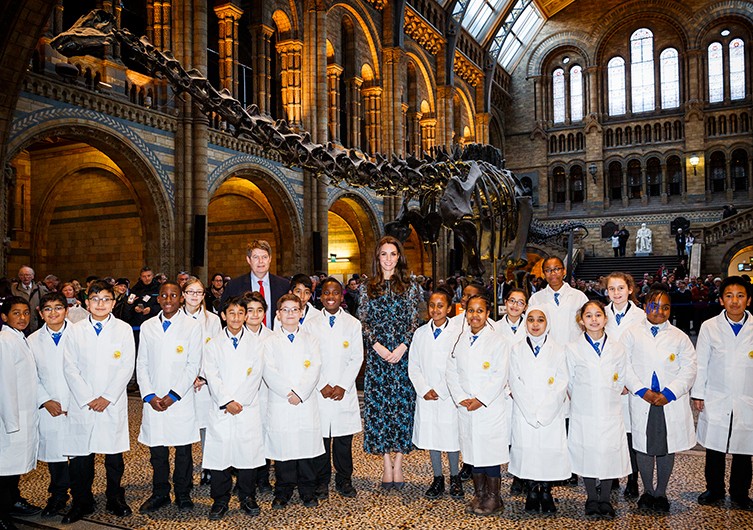
The museum’s commitment to education extends far beyond passive displays, with a robust program of dinosaur-focused learning opportunities. School groups benefit from tailored educational sessions led by specialist educators who use the museum’s specimens to bring prehistoric life into the classroom. Interactive workshops allow children to handle fossil casts, participate in simulated excavations, and learn the principles of paleontology through hands-on activities. The museum’s digital resources, including virtual tours and online learning materials, extend its educational reach globally, making dinosaur science accessible to those unable to visit in person. Special programs targeting different age groups ensure that content is age-appropriate while maintaining scientific accuracy, from simple fossil identification activities for young children to more complex discussions of evolutionary biology for older students.
Sophie the Stegosaurus: A Crown Jewel
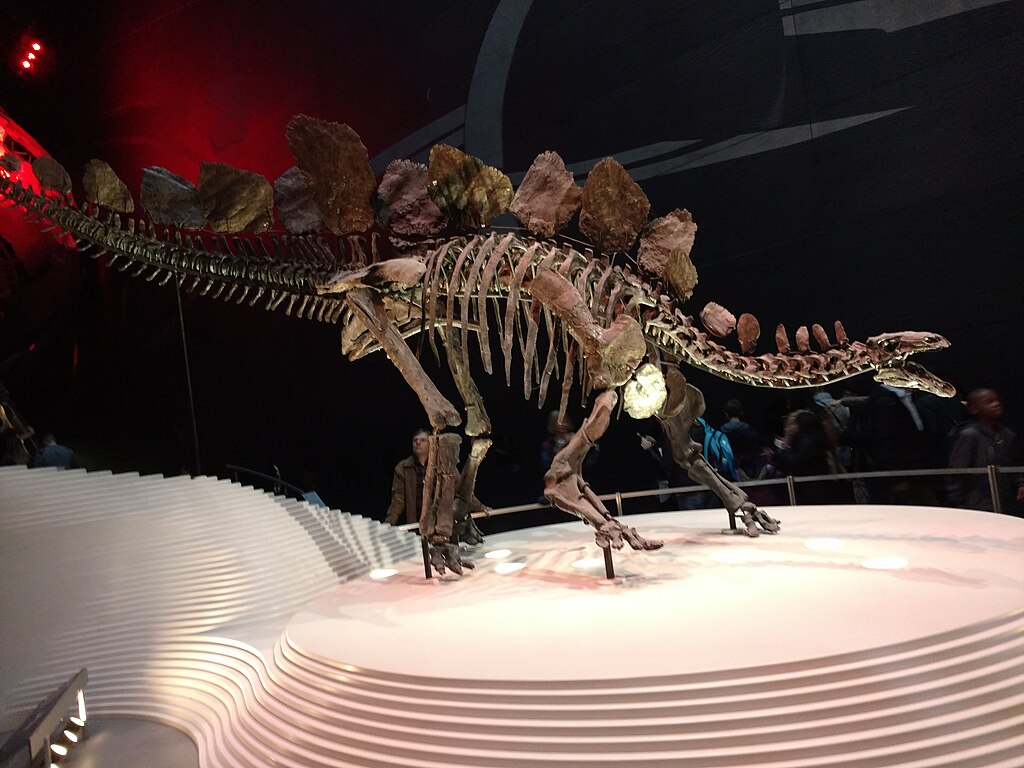
In 2014, the museum unveiled what would become one of its most prized dinosaur exhibits: Sophie the Stegosaurus. This specimen represents the most complete Stegosaurus skeleton ever found, with approximately 85% of the original bones preserved—an exceptional level of completeness for a dinosaur fossil. Named after the daughter of the wealthy donor who helped fund its acquisition, Sophie provides unprecedented insights into Stegosaurus’ anatomy and biology. Museum scientists have conducted extensive research on the specimen, including creating detailed computer models to study how this iconic dinosaur moved and functioned. The exceptional preservation allows visitors to appreciate the actual fossil bones rather than casts, providing an authentic connection to this 150-million-year-old creature. Sophie exemplifies the museum’s commitment to acquiring specimens of exceptional scientific and educational value.
Temporary Exhibitions and Special Events

The NHM regularly supplements its permanent dinosaur displays with special exhibitions that explore specific aspects of paleontology in greater depth. These temporary exhibitions often feature specimens rarely seen by the public, including loans from other institutions worldwide and pieces from the museum’s vast storage collections. Special events like “Dino Snores” allow children to spend the night in the museum, sleeping beneath the dinosaur skeletons for a truly memorable experience. The museum also hosts regular dinosaur-themed lectures by prominent paleontologists, giving the public access to cutting-edge research directly from the scientists making the discoveries. During school holidays, additional activities such as fossil preparation demonstrations give visitors insight into the painstaking work required to prepare specimens for both display and scientific study.
Digital Innovations and Virtual Access
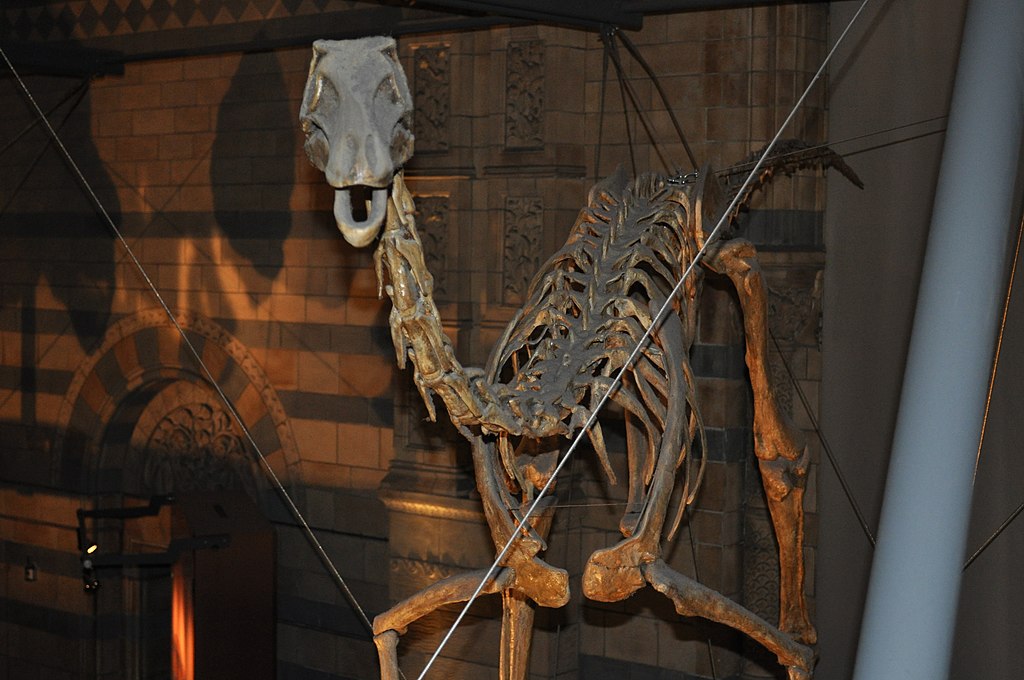
The NHM has embraced digital technology to enhance both the visitor experience and global access to its dinosaur collections. The museum’s smartphone app offers augmented reality features that bring fossil displays to life, showing how dinosaurs would have looked and moved when alive. Online resources include high-resolution 3D scans of key specimens, allowing researchers and dinosaur enthusiasts worldwide to examine fossils in unprecedented detail without needing to visit London. Virtual tours enable remote exploration of the dinosaur galleries, making the collection accessible to those unable to visit in person due to geographic, financial, or mobility constraints. The museum’s social media presence regularly features dinosaur content, engaging millions of followers with fascinating facts, behind-the-scenes glimpses of research, and announcements of discoveries.
A Gateway to Paleontological Careers
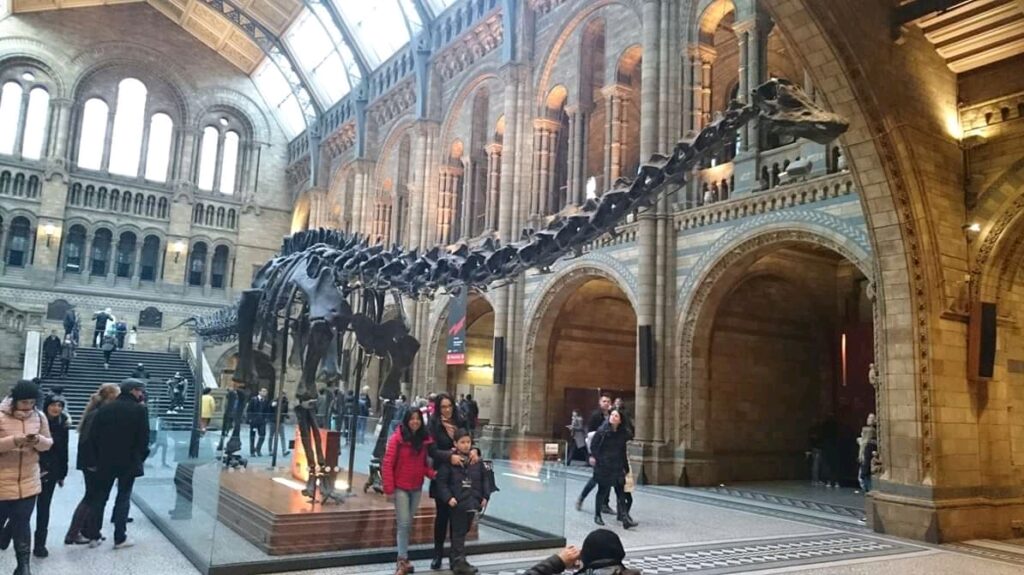
For many professional paleontologists, the NHM’s dinosaur gallery provided their first inspiration to pursue careers in the field. The museum actively fosters this potential through various initiatives designed to nurture the next generation of dinosaur researchers. Volunteer programs allow dinosaur enthusiasts to gain hands-on experience working with collections and engaging with the public. The museum’s connections with universities facilitate student research projects using the collections, providing valuable experience for aspiring paleontologists. Annual competitions encourage young people to develop and present their research projects on dinosaurs and other prehistoric life. Many current staff paleontologists cite childhood visits to the museum as pivotal moments in their career development, creating a virtuous cycle where today’s displays inspire tomorrow’s discoveries.
The Wider Museum Context
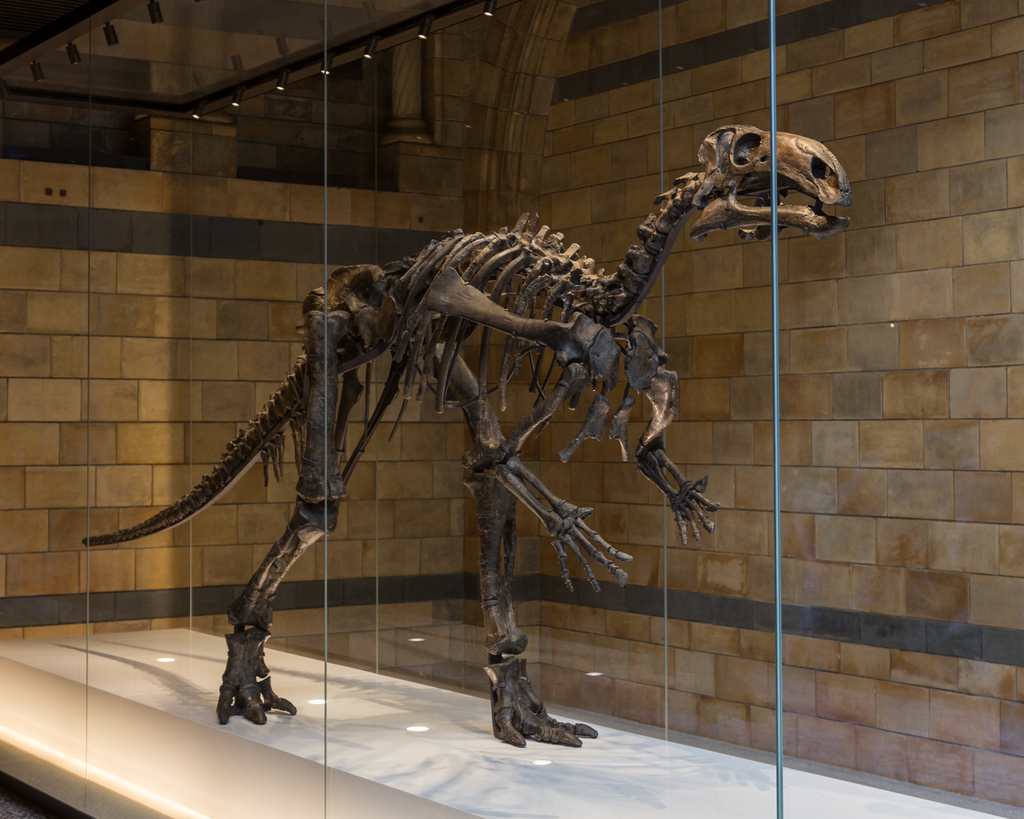
While dinosaurs may be the star attraction for many visitors, the NHM places them within the broader context of Earth’s evolutionary history. Galleries adjacent to the dinosaur exhibits explore the world before dinosaurs, the mammals that rose to prominence after the dinosaur extinction, and the ongoing processes of evolution that continue to shape life on Earth today. This contextual approach helps visitors understand dinosaurs not as isolated curiosities but as a fascinating chapter in our planet’s biological history. The museum’s focus on environmental change and mass extinctions, including the event that ended the dinosaurs’ reign, provides relevant parallels to contemporary environmental challenges. By connecting dinosaurs to broader themes of evolution, extinction, and environmental change, the museum creates a more comprehensive educational experience.
International Collaborations and Expeditions
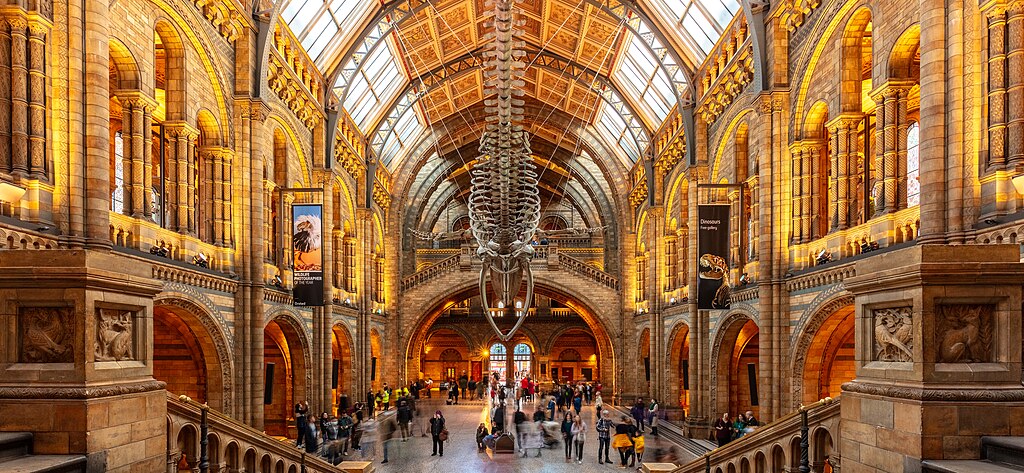
The NHM extends its dinosaur research far beyond London through international partnerships and field expeditions. Museum paleontologists regularly participate in dinosaur excavations worldwide, from the deserts of Mongolia to the badlands of North America. These expeditions not only add to the museum’s collections but also build important relationships with research institutions across the globe. The museum frequently hosts visiting researchers, fostering a collaborative approach to paleontology that transcends national boundaries. Joint research projects with international partners leverage the specialized expertise of different institutions to tackle complex questions about dinosaur biology and evolution. The fossils discovered during these expeditions often become part of special exhibitions that highlight the ongoing nature of dinosaur discovery and the global distribution of these fascinating creatures.
A Cultural Icon in Popular Imagination

The NHM’s dinosaur gallery has transcended its scientific role to become a significant cultural landmark in the British imagination. The museum and its dinosaurs have featured in numerous films, television programs, and novels, cementing their place in popular culture. For many London families, a child’s first dinosaur encounter at the museum has become an intergenerational tradition, with parents who visited as children now bringing their offspring to experience the same wonder. Tourist guidebooks invariably list the dinosaur gallery as a must-see London attraction, drawing international visitors who might otherwise not engage with natural history. The museum shop’s dinosaur merchandise—from scientifically accurate models to playful plush toys—allows visitors to take a piece of the experience home, further extending the museum’s cultural influence. This cultural significance helps secure public support for the museum’s scientific mission, creating a virtuous cycle where popularity supports serious research.
Conclusion
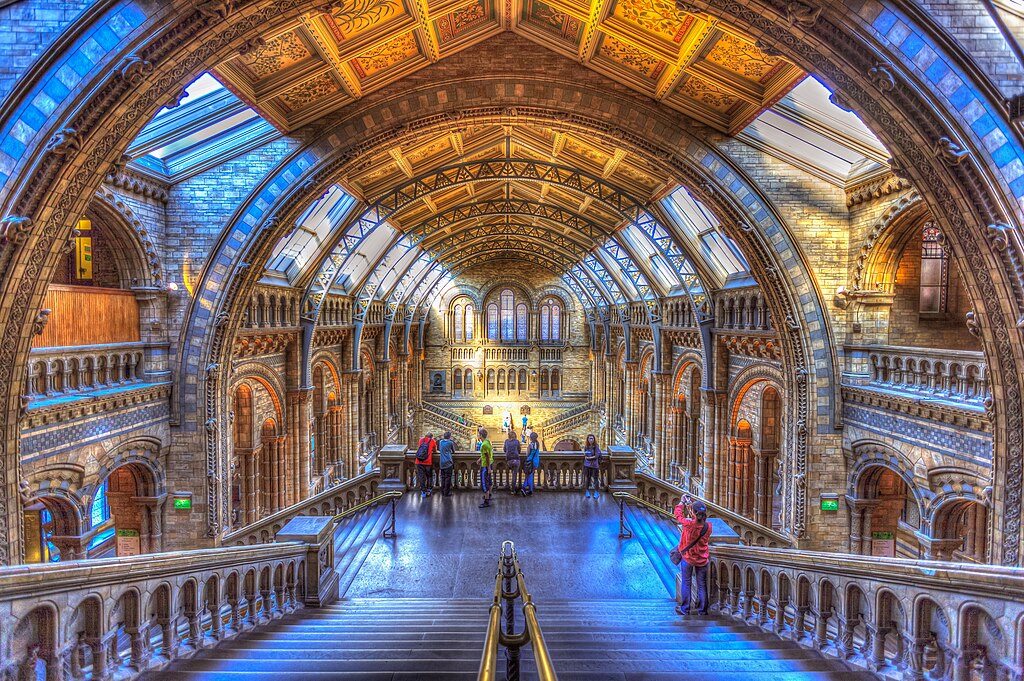
The Natural History Museum in London has earned its status as a global dinosaur destination through a powerful combination of historical significance, scientific excellence, and visitor engagement. From its Victorian origins at the dawn of dinosaur science to its current position at the forefront of paleontological research, the museum connects visitors directly to Earth’s mesmerizing prehistoric past. The blend of authentic specimens, cutting-edge research, educational programs, and digital innovations creates an unparalleled dinosaur experience that attracts millions of visitors annually. As both a scientific institution and a cultural landmark, the NHM continues to inspire wonder and curiosity about dinosaurs among visitors of all ages, while simultaneously advancing our understanding of these extraordinary creatures that dominated our planet for over 160 million years.

